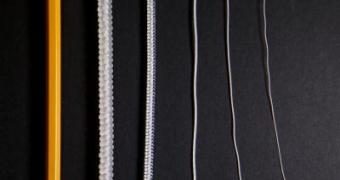In a paper published in a recent issue of the journal Science, researchers document the use of fishing lines and sewing threads to piece together artificial muscles whose strength is nothing short of impressive.
These artificial muscles are the brainchild of scientists at the University of British Columbia, the UT Dallas and their colleagues, Nature World News reports.
The brainiacs say that, as proven by the outcome of experiments that they carried out, their artificial muscles are about 100 times stronger than human and animal ones.
“In terms of the strength and power of the artificial muscle, we found that it can quickly lift weights 100 times heavier than a same-sized human muscle can, in a single contraction,” John Madden with the University of British Columbia explains.
“It also has a higher power output for its weight than that of an automobile combustion engine,” the researcher goes on to detail.
The scientists who worked on this project explain that, although artificial muscles have been created before, the use of materials such as metal wires and carbon nanotubes in their manufacture meant that making them was a rather expensive process.
By comparison, artificial muscles made from high-strength polymer fibers that have been twisted into tight coils come with a perfectly acceptable price tag.
“This definitely gives the entire field an entirely new perspective on how to create artificial muscles,” Richard Vaia, a materials scientist who was not involved in this project, commented on the achievement.
The polymer fibers-based artificial muscles described in the journal Science can be controlled with the help of an electrical heating element, whose job is to expose them to various temperatures and thus get them to contract and relax.
The researchers who created them say that, at some point in the future, these man-made muscles could be used to control prosthetics, medical devices and even robots.
Check out the video below to see one such artificial muscle control a surgical forceps.

 14 DAY TRIAL //
14 DAY TRIAL // 